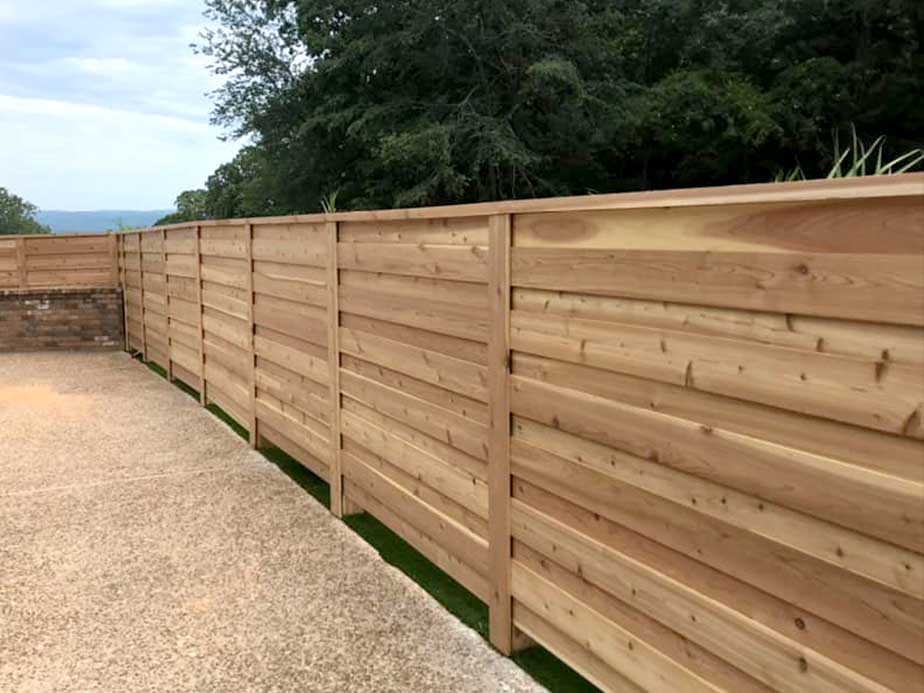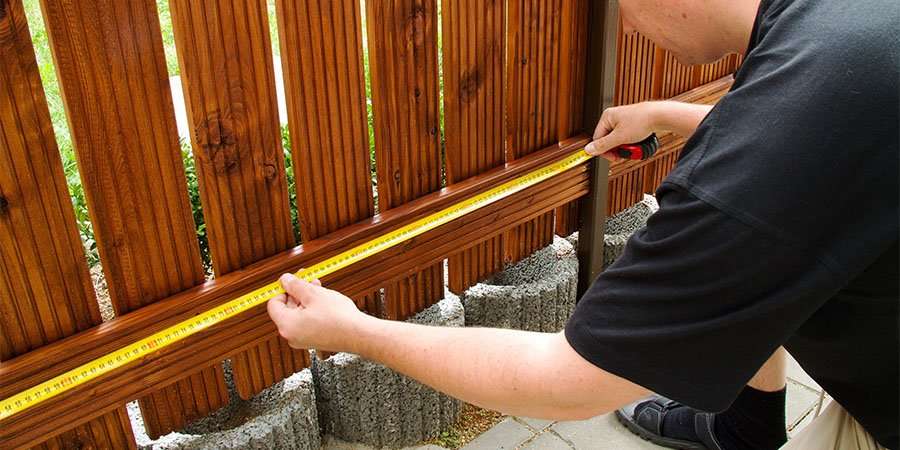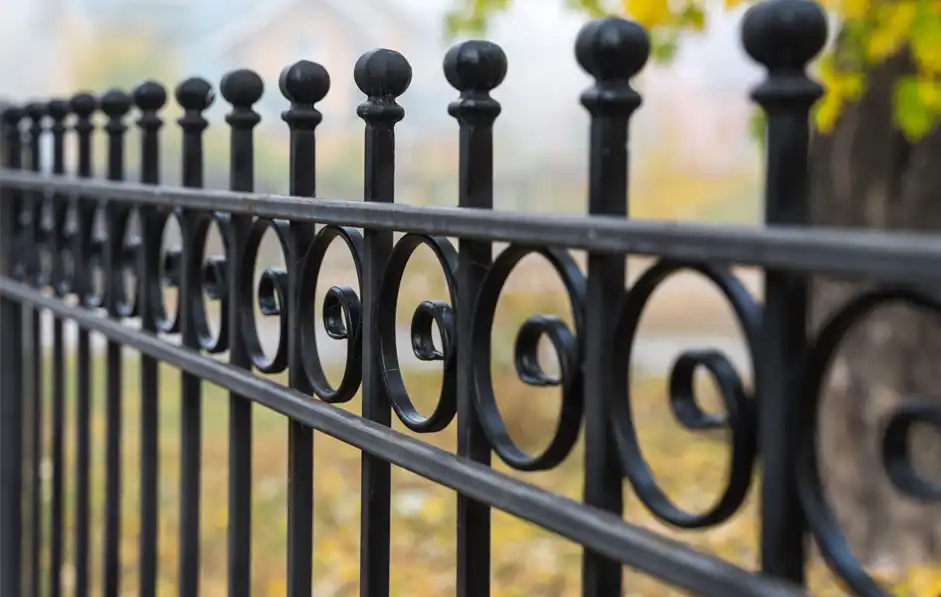Featured
When securing your home, selecting the right fence elevation is crucial for both personal privacy and safety. The height of your fence plays a considerable duty in identifying exactly how efficient it will certainly be at securing your home or organization from intruders. While a tall fence may look like the very best option, the perfect elevation depends upon a number of aspects, consisting of safety requirements, neighborhood regulations, and the products utilized. Listed below, we'll outline essential considerations to assist you choose the ideal fencing height for ideal safety and security.
![]()
If you stay in a community governed by a property owners' association (HOA), you need to also examine any type of specific standards they have for fence height, style, and materials. Abiding by these laws ensures you avoid lawful issues and keep a great partnership with your next-door neighbors.
Taller fencings are much more difficult to scale and can substantially reduce the likelihood of break-ins. Including features like sharp tops, barbed cable, or perhaps electrical fencing can even more enhance the obstacle's safety. A fence that gets to 8 feet or greater is commonly effective at preventing most people from conveniently leaping over it.
![]()
Wooden Fences: While wooden fencings provide personal privacy, they can be simple to climb, especially if there are no anti-climb functions. For maximum protection, take into consideration a wood fence that's 6 to 8 feet high with sharp tops or trellis expansions that make it harder to scale. Chain-Link Fences: Chain-link fences are typically a lot more budget friendly and long lasting than wood, and they can be developed to the necessary height for safety and security. To raise prevention, consider adding barbed or razor cable ahead. These attributes dissuade climbing and make the fence a lot more challenging to violation. Wrought Iron Fencings: Wrought iron fencings are typically made use of for high-security objectives as a result of their strength and toughness. Their vertical bars make it challenging to climb, and they can be constructed to 6 to 8 feet high with added spikes or attractive anti-climb attributes to further secure the border. Vinyl Fencings: Plastic is a superb choice if you need a strong, private fence, yet like wood, plastic fences may need extra elevation or safety and security features to prevent climbing. Choose a fence that goes to the very least 6 feet high to ensure personal privacy and safety. Each product uses different benefits in terms of looks, sturdiness, and upkeep, so it is necessary to consider your particular needs and choices when selecting a fence.
Anti-Climb Functions: Installing sharp or sharp tops, trellis extensions, or safety spikes on top of the fence makes it harder for anybody to scale the fencing. These functions act as a solid deterrent to prospective burglars. Barbed or Razor Cord: Including barbed cord or razor wire on top of your fencing enhances safety and security dramatically. This is frequently used in high-security areas, such as commercial residential or commercial properties, yet can likewise be an excellent choice for homes in high-risk areas. Electric Fencing: For high-level safety and security, you may intend to take into consideration adding an electrical fencing to your residential or commercial property. Electric secure fencing, when mounted properly, can create a strong deterrent while staying reasonably discreet. It delivers a light shock to anyone that tries to climb the fence or touch. Incorporating height with these added features makes certain that your fencing supplies the highest degree of safety and security.
Balancing the requirement for privacy and safety and security while preserving the visual allure of your property can aid you pick the appropriate elevation and material for your fencing. Make certain that your fencing enhances the total style of your home and does not adversely influence the visual charm.
![]()
By meticulously considering all these components, you can develop a secure, personal, and attractive limit around your home that uses both tranquility of mind and protection.

- Understand Local Regulations and Zoning Laws. The initial action in choosing your fencing height is to acquaint on your own with local policies. Lots of communities have zoning legislations that determine the optimum allowed height for fences, especially in front lawns and along property lines. Generally, front yard fencings are limited to 3 to 4 feet, while backyard fences can be as tall as 6 to 8 feet or more. Some areas may call for a permit for fences over a specific height, so it's important to get in touch with your neighborhood zoning workplace before beginning building.
If you stay in a community governed by a property owners' association (HOA), you need to also examine any type of specific standards they have for fence height, style, and materials. Abiding by these laws ensures you avoid lawful issues and keep a great partnership with your next-door neighbors.
- Identify the Preferred Degree of Security. The level of safety and security you need is a significant factor in figuring out the perfect fence elevation. A fence height of 6 to 8 feet is typically recommended for optimum protection.
Taller fencings are much more difficult to scale and can substantially reduce the likelihood of break-ins. Including features like sharp tops, barbed cable, or perhaps electrical fencing can even more enhance the obstacle's safety. A fence that gets to 8 feet or greater is commonly effective at preventing most people from conveniently leaping over it.
- Select the Right Material for Your Fence. The product of your fence plays an important role in its ability to give protection. While taller fencings are better for security, the type of material you use can hinder the efficiency or improve of the height. Right here are some popular fencing products for protection:

Wooden Fences: While wooden fencings provide personal privacy, they can be simple to climb, especially if there are no anti-climb functions. For maximum protection, take into consideration a wood fence that's 6 to 8 feet high with sharp tops or trellis expansions that make it harder to scale. Chain-Link Fences: Chain-link fences are typically a lot more budget friendly and long lasting than wood, and they can be developed to the necessary height for safety and security. To raise prevention, consider adding barbed or razor cable ahead. These attributes dissuade climbing and make the fence a lot more challenging to violation. Wrought Iron Fencings: Wrought iron fencings are typically made use of for high-security objectives as a result of their strength and toughness. Their vertical bars make it challenging to climb, and they can be constructed to 6 to 8 feet high with added spikes or attractive anti-climb attributes to further secure the border. Vinyl Fencings: Plastic is a superb choice if you need a strong, private fence, yet like wood, plastic fences may need extra elevation or safety and security features to prevent climbing. Choose a fence that goes to the very least 6 feet high to ensure personal privacy and safety. Each product uses different benefits in terms of looks, sturdiness, and upkeep, so it is necessary to consider your particular needs and choices when selecting a fence.
- Include Protection Attributes for Extra Security. While elevation is essential, adding extra protection features to your fence can increase its efficiency. Think about the following additions:
Anti-Climb Functions: Installing sharp or sharp tops, trellis extensions, or safety spikes on top of the fence makes it harder for anybody to scale the fencing. These functions act as a solid deterrent to prospective burglars. Barbed or Razor Cord: Including barbed cord or razor wire on top of your fencing enhances safety and security dramatically. This is frequently used in high-security areas, such as commercial residential or commercial properties, yet can likewise be an excellent choice for homes in high-risk areas. Electric Fencing: For high-level safety and security, you may intend to take into consideration adding an electrical fencing to your residential or commercial property. Electric secure fencing, when mounted properly, can create a strong deterrent while staying reasonably discreet. It delivers a light shock to anyone that tries to climb the fence or touch. Incorporating height with these added features makes certain that your fencing supplies the highest degree of safety and security.
- Consider Personal Privacy and Aesthetic Preferences. While security ought to be your primary worry, it's also important to think about the aesthetic charm of your fence. High fencings may give safety, however they can sometimes appear enforcing or unfriendly. If privacy is a problem, a solid wood or plastic fence can offer both safety and seclusion, while a functioned iron fencing uses safety with an open view.
Balancing the requirement for privacy and safety and security while preserving the visual allure of your property can aid you pick the appropriate elevation and material for your fencing. Make certain that your fencing enhances the total style of your home and does not adversely influence the visual charm.

- Final Ideas on Fencing Elevation and Safety And Security. Choosing the ideal fencing elevation for optimum security entails stabilizing several elements, consisting of local guidelines, the level of safety needed, the product of the fencing, and extra safety attributes. In basic, a fencing height of 6 to 8 feet is suitable for most residential buildings, with taller fencings offering an included layer of security for high-risk areas.
By meticulously considering all these components, you can develop a secure, personal, and attractive limit around your home that uses both tranquility of mind and protection.
Latest Posts
Find Out Save Big on Car Maintenance with Montclare Auto Repair’s Special Deals
Published May 27, 25
1 min read
Explore WyHy Federal Credit Union – Essential Perks for Your Financial Success
Published May 27, 25
1 min read
Discover WyHy FCU – Key Advantages for Your Future
Published May 24, 25
1 min read